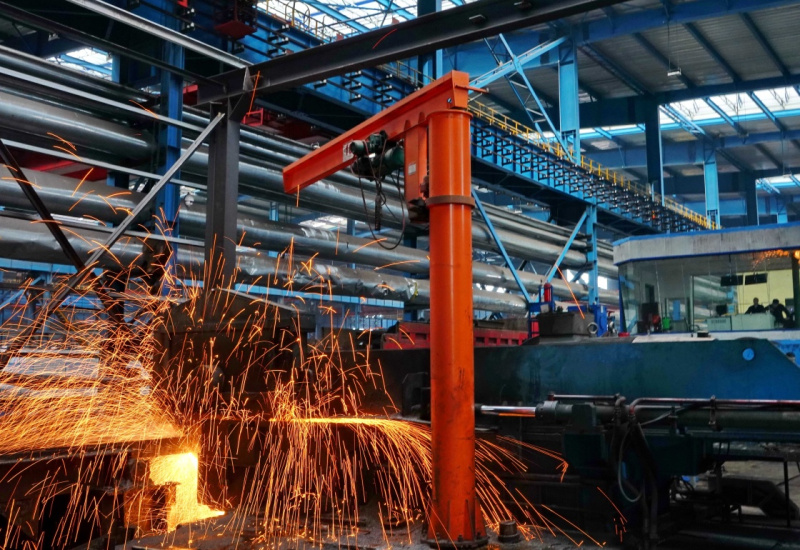In recent years, with the Indian government's continued investment in transportation, energy, and urban areas, the country has gradually entered a new era of infrastructure construction. This new situation has presented an opportunity for the country's construction contractors and equipment manufacturers - India's demand for modern large-scale infrastructure construction is urgent. Especially in recent times, the ambition of India's national strategic planning is changing the implementation and geographical distribution of construction projects. The federal budget for India's fiscal year 2025-2026 (April 1, 2025- March 31, 2026) states that the Indian government will allocate INR 11.21 trillion (approximately USD 133 billion) for local infrastructure capital expenditures. This figure accounts for 3.4% of the country's gross domestic product.

It is worth noting that the budget of the Indian railway sector has increased by 10%, and the funds will be used for the modernization of over 1000 stations, the expansion of the high-speed railway network, and the promotion of electrification. Highway expenditures in India have also increased by 7%. According to Indian media reports on January 26th, under the country's urban road development plan, Indian Transport Minister Nitin Gadkar announced the launch of a national cable car development plan called the "Parvatmala Pariyojana", which aims to develop 200 cable car projects at a cost of 1.25 trillion rupees (approximately 14.645 billion US dollars) over the next five years.
At the level of urban construction, India plans to invest 7.4 trillion rupees (approximately 86.691 billion US dollars) in urban development between 2024 and 2028, including subway expansion, housing, solid waste management, and comprehensive upgrading under the "Smart City Mission". These projects will continue to drive the growth of demand for building materials, earthmoving machinery, and engineering contracting services in India.
According to a joint analysis by Off Highway Research (a globally renowned engineering machinery industry consulting firm) and consulting firm ABCG, the Indian engineering machinery market is experiencing long-term growth: "This is the largest equipment market outside of China and the most attractive growth opportunity globally." At the same time, both parties emphasized in the analysis report that despite the surge in demand, India still heavily relies on low-cost labor, which is both an opportunity and a challenge for manufacturers seeking market share. Success in India requires not only price, but also localized production, customized equipment, comprehensive after-sales service, and most importantly, proving its actual value, "both parties pointed out in the report.
Manufacturers from other countries have also noticed these trends and are adjusting their strategies based on the combination of opportunities and practicality in the Indian market.
JCB (one of the world's top five construction machinery manufacturers) is a long-term and important participant in the Indian construction machinery market. In early 2025, JCB India will launch a new equipment series at the Bharat Construction Machinery Exhibition that complies with CEV Stage V emission standards, including backhoe loaders, telescopic arm forklifts, etc., all of which meet the latest environmental and safety regulations in India. Caterpillar has been operating in India for over 50 years and has participated in projects such as the Bakra Water Conservancy Hub and the Atal Tunnel. It has established three manufacturing plants and one Chennai research and development center in India. In 2024, Caterpillar launched its "Service Commitment" program at the Bauma Conexpo India, a construction machinery exhibition in New Delhi, India. Hitachi Construction Machinery (a world leading excavator manufacturer) has also strengthened its long-term commitment to India, but focuses on research and development. The company has announced the establishment of a new product development center in Karnataka, India.
Not only are international manufacturers increasing their investments, but local Indian companies are also seizing opportunities. ACE Construction Equipment Company and other Indian manufacturers are actively replacing foreign suppliers by taking advantage of changes in trade patterns and diversified supply chain demands. ACE Construction Equipment Company's product line covers more than 10 types of equipment, including mobile cranes, tower cranes, rotary drilling rigs, and more.
According to Construction Europe, ACE Construction Equipment Company is actively exploring export markets. Ajay Malik, the head of its international business, said, "We are seen by India as a reliable and high-quality manufacturing partner, which brings us new export opportunities. Policy support combined with diversified global equipment demand has created a mature environment for Indian manufacturers to go global." This reflects that India is not only a target market for manufacturers to expand, but also an exporter of construction machinery knowledge, talent, and hardware.
India, once considered the 'next blue ocean' market, has now become the center of the global construction machinery landscape - with high infrastructure investment, active policy support, and manufacturers from around the world gradually realizing that success in India requires a deep understanding of localization.
Indeed, the reliability of this concept will be tested in the coming years of development. Although electrification, digitization, and AI assisted workflows continue to advance globally, India's "technology adoption curve" will still be influenced by unique local factors such as labor dynamics, budget constraints, regional diversity, and extreme demands for equipment to operate continuously. However, when manufacturers develop simpler, smarter, and more durable devices for India, these designs may quickly feed back into global product lines. The golden period of India's infrastructure and the release of machinery demand will bring enormous pressure to its steel industry in terms of quality upgrading, cost control, green transformation, and efficiency improvement. Of course, this wave may bring greater opportunities to its steel industry.
Post time: Jul-17-2025

